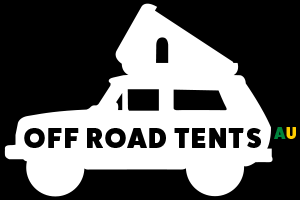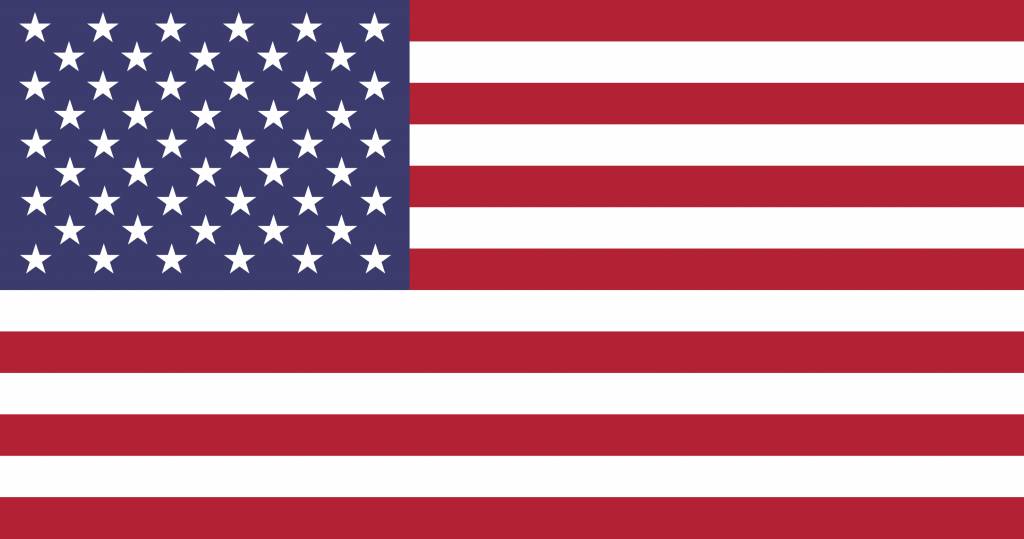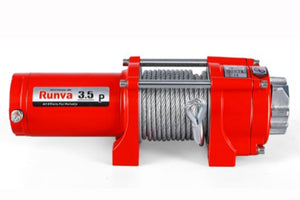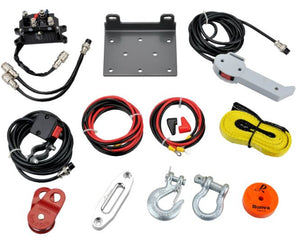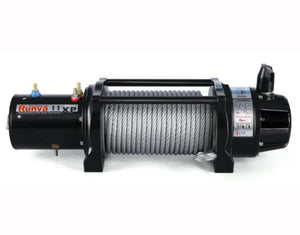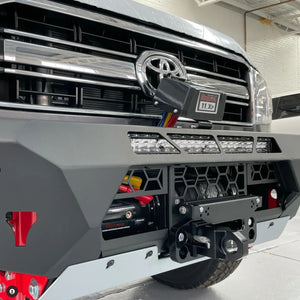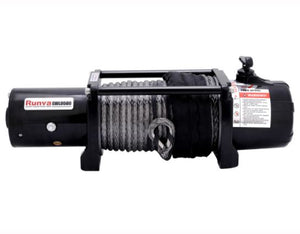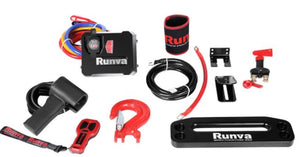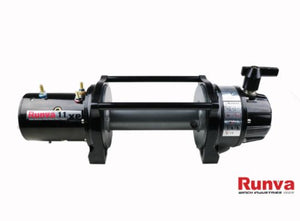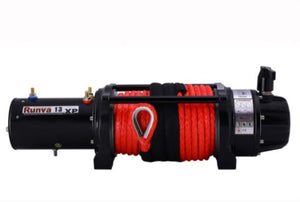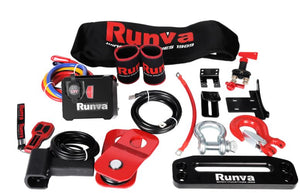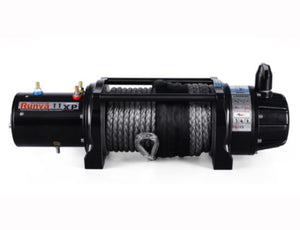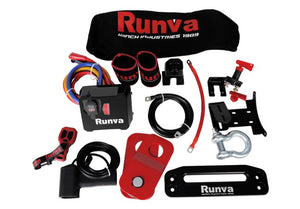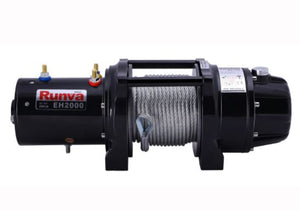Best 4x4 Winches
4x4 Winches Review
When it comes to embarking on off-road adventures or conquering challenging terrains, the presence of a dependable and robust winch can have a significant impact. A 4x4 winch is an essential piece of equipment designed explicitly for off-road enthusiasts, adventurers, and professionals who require exceptional pulling power. It acts as a crucial lifeline when your vehicle becomes immobilized in difficult conditions such as mud, sand, snow, or steep slopes, enabling you to recover and continue your journey.
4x4 winches possess remarkable strength and the ability to handle demanding situations with ease. Typically affixed to the front or rear of a vehicle, they are securely mounted on heavy-duty bumpers or winch mounts. These winches find common usage in 4x4 trucks, SUVs, Jeeps, and other off-road vehicles.
A high-quality and dependable 4x4 winch stands as one of the most vital components for any off-road vehicle. Hence, we have taken the time to curate this collection where we will discuss various aspects of winches in general, their purpose, why and when you might need them, and also showcase a selection of exceptional 4x4 winches we offer. Our aim is to assist you in finding the winch that best suits your requirements!
| What Is A 4x4 Winch? | Do I Need A 4WD Winch? |
| How Do I Choose A 4x4 Winch? | 4x4 Winch Types |
| Best 4x4 Winches Electric | Best 4x4 Winches Hydraulic |
| 4x4 Winch Accessories | 4x4 Winches FAQS |
| All 4x4 Winches For Sale Australia |
What Is A 4x4 Winch?
A 4x4 winch is a specialized device designed for off-road vehicles, particularly those with four-wheel drive capabilities. It utilizes a motorized drum or spool and a sturdy cable or rope to provide the necessary pulling power for recovering stuck vehicles.
Typically mounted on the front or rear of a vehicle and securely fastened to a heavy-duty bumper or winch mount, a 4x4 winch can be operated using a handheld controller or a wired/wireless remote control. This allows the user to control the winch's movement and pulling force.
When faced with challenging terrains like mud, sand, snow, or steep inclines, a 4x4 winch becomes indispensable. By attaching the winch's cable or rope to a solid anchor point such as a tree, rock, or another vehicle, it exerts a formidable force to extract the stuck vehicle from its predicament and get it back on track.
Off-road enthusiasts, adventurers, and professionals who frequently encounter demanding off-road situations widely utilize 4x4 winches. These winches are valued for their sturdy construction, high pulling capacity, and reliable performance, making them an essential tool for navigating difficult terrains and ensuring a safe and successful off-road expedition.
Do I Need A 4WD Winch?
Well whether or not you need a 4WD winch completely depends on you and the off-road activities you plan on doing. If you seldom take your vehicle on demanding terrains where you might have to use a winch then you probably don’t need to spend money on it.
However, if you are an off-road enthusiast that frequently ventures into challenging terrains and has to go through snow, sand, or even mud then you should think about investing into 4x4 winches.
How Do I Choose A 4x4 Winch?
In order to choose a correct winch for your next off-road adventure you have to consider a few things;
Weight Rating
Determine your vehicle's weight and choose a winch with a weight rating that surpasses it. It is generally advised to select a winch with a rating of 1.5 times your vehicle's weight to ensure adequate pulling power.
Line Length and Thickness
Evaluate the length and thickness of the winch line or cable. Longer lines offer more versatility in finding suitable anchor points, while thicker lines provide increased strength and durability. Find the right balance based on your specific needs and usage.
Winch Type
There are two main types of winches; electric and hydraulic. Electric winches are more commonly used and suitable for most off-road applications, while hydraulic winches are more powerful and typically utilized in heavy-duty industrial settings, requiring a hydraulic power source.
Pulling Power
Assess the winch's pulling power or line pull capacity. Ensure it meets your requirements, particularly when dealing with challenging terrain or recovery scenarios.
Mounting Options
Determine where you intend to mount the winch on your vehicle. Check if your vehicle has a compatible winch mount or bumper, or if modifications are necessary for installation.
Control Options
Consider the preferred control system, such as a handheld controller or wired/wireless remote control. Choose a control system that provides convenience and ease of use for your intended purposes.
4x4 Winch Types
There are 2 types of 4x4 winches. Electric and hydraulic. And there are also 2 types of 4x4 winch cables. We are going to go over them a bit and explain what kind of features each of them has and what you should use each of the types for.
Electric 4x4 Winches
Electric 4x4 winches are the predominant choice for off-road use. They are driven by an electric motor that connects to the vehicle's battery. Electric winches offer versatility, simple installation, and a broad selection of pulling capacities. They cater to the needs of most off-road enthusiasts and deliver consistent performance across different conditions. They are also a lot cheaper than the hydraulic ones, making them more accessible to off-road enthusiasts.
Hydraulic 4x4 Winches
Hydraulic winches, although less frequently used in off-road scenarios, are recognized for their remarkable strength and long-lasting performance. These winches operate by harnessing hydraulic power from sources such as a vehicle's power steering pump or a dedicated hydraulic system. They are commonly employed in heavy-duty industrial environments due to their impressive pulling capacity. Hydraulic winches excel in demanding off-road situations and applications that demand continuous and sustained pulling power.
Cable Types
Steel Cables
Steel cables are the conventional and prevalent type of winch cable. They consist of multiple steel wire strands twisted together to create a durable and robust cable. Steel cables are renowned for their high tensile strength, resistance to abrasion and heat, and suitability for heavy-duty applications. They offer a good lifespan. However, steel cables can be susceptible to rust if not properly maintained over time, and they are heavier compared to synthetic ropes.
Synthetic Ropes
Synthetic ropes, also referred to as synthetic winch lines or winch ropes, are gaining popularity in the off-road community. They are constructed from strong and lightweight synthetic fibers. Synthetic ropes provide several advantages over steel cables. They are lighter in weight, easier to handle, and safer in case of failure as they do not recoil like steel cables. They are also less prone to corrosion. However, synthetic ropes are more vulnerable to abrasion and UV damage and necessitate meticulous inspection and maintenance to ensure their longevity.
Best 4x4 Winches Electric
Runva Premium 12V Best 4x4 Winch For The Money Australia

First up on our list is one of the most popular 4x4 winch brands, RUNVA. This specific winch is an electric one and it has a 12V motor. This electric winch has an IP67 rating meaning that it is waterproof and all around weatherproof which makes it an ideal off-road accessory especially in those dirty and muddy environments.
It uses a 25 meter long synthetic rope which is both lightweight yet durable and able to withstand up to 13000lbs or 5897kg! It has a full steel 3 stage planetary gear train and even an automatic ratchet brake that can locks into place without any fear of slipping, thus providing amazing recovery support.
On top of all that, it can be operated using a wireless remote controller and it is very lightweight, weighing only 31,4kg. It is one of the most reliable winch models out there and also a budget-friendly option as well and there’s no doubt that it will serve you well on your next off-road adventure. And also it comes with a Limited Lifetime Warranty!
RUNVA 24V With Steel Cable Best Portable Winch For 4x4

Here we have another amazing RUNVA 4x4 winch except this one comes with a steel cable. This is among the strongest 4x4 winches out there as it has a rated line pull of 17500 lbs or 7938 kg! It uses a 24V electric motor and comes with a casing that has been powder coated to increase resilience in the outdoors and prevent it from eroding.
This electric 4x4 winch has a full steel 3 stage planetary gear train and an automatic load-holding brake system that will prevent your load from ever slipping. Considering that it uses a steel rope, it weighs more than the aforementioned synthetic rope RUNVA winch. It weighs 62 kg.
However, it also comes with a wireless remote controller which will make operating this winch a whole lot easier. It is yet another amazing 4x4 winch to consider and definitely one of the strongest electric winches out there. It also comes with a Limited Lifetime Warranty!
KingOne 4x4 Bullbar Winches

Last up for the electric 4x4 winches is the KingOne winch that comes with a synthetic cable and has a rated line pull of 12000 lbs or 5443 kg. The TDS model was awarded 1st place as the most popular 4WD winch and was also voted the best value for money as well as one of the lightest 4x4 winch models out there.
It uses a heavy-duty motor and comes with a 3-stage planetary gearbox that delivers the most reliable performance under tough conditions. It also features an automatic double cone brake that will hold the rope and your load from slipping. As we mentioned before, this is one of the lightest 4x4 winches out there and it weighs only 35 kg.
Like the majority of electric winces, this one also comes with a wireless controller. Installing this electric winch is easy and maintaining it is also a piece of cake. If you’re looking for that perfect winch to take with you on your next off-road adventure, we highly suggest that you check this one out. It also comes with a 2 Year Warranty!
Best 4x4 Winches Hydraulic
RUNVA Winch Hydraulic With Steel Cable

First up for the hydraulic 4x4 winches is another RUNVA winch. This is by far the strongest 4WD winch we have mentioned in this article and it has a rated line pull of 20,000 lbs or 9.072 kg which is more than enough to extract your vehicle or someone else's from mud, sand, or even snow. It has a durable construction that has been red powder coated for increased resilience.
That means that it can withstand pretty much any outside weather condition and even be exposed to extreme heats and extreme cold temperatures without ever getting damaged. It is also water resistant! It has a full steel 2 stage planetary gear train and features an automatic ratchet load hydraulic brake disc which will stop your cable from slipping.
Now this hydraulic winch uses a steel cable which makes it even more durable. The cable of this 4x4 winch is 48m long and 14mm thick. This winch is a bit bigger than the previously mentioned ones and while it does have a great use on industrial sites it can also be installed and used on an off-road vehicle. This 4x4 winch also comes with an 18 Month Commercial Warranty!
RUNVA Winch Synthetic Rope

The last item on our list is another hydraulic winch made by RUNVA except that this one unlike the previously mentioned one uses a synthetic cable. While it does not have a rated line pull like the aforementioned one it is still a very strong 4WD winch as it can pull up to 12,000 lbs or 5,897 kg! Thanks to the synthetic rope, it is a lot lighter, weighing only 35 kg.
It is perfect for mounting on off-road vehicle or even trailers and it is constructed out of build-to-last materials and even gray powder coated to prevent it from eroding in muddy environments. The casing of this 4x4 winch can withstand pretty much anything you can throw at it. It can withstand incredibly cold temperatures or even scorching heat without getting damaged.
It comes with a full steel planetary gear train and an automatic load holding screw cone brake. It also comes with a 26m long synthetic rope and a heavy duty wireless remote controller for convenient use. If you are looking for a lightweight hydraulic 4x4 winch then this is the product for you. It is one of the smaller hydraulic winches that can be found on the market while simultaneously being incredibly strong and durable. And it also comes with a Limited Lifetime Warranty!
4x4 Winch Accessories
Winch Solenoid
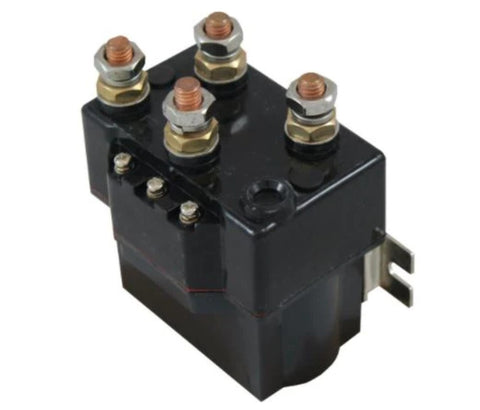
A winch solenoid is an electrical component that regulates power flow between the winch motor and battery. Acting as a switch, it enables the winch to be powered on or off. Winch solenoids may include thermal overload protection to prevent motor damage due to overheating. Typically located near the winch motor, they are often housed in weather-resistant enclosures. Winch solenoids are vital for safe and efficient winch operation, ensuring a controlled power supply to the motor.
This is one of the most common spare parts you will get to replace throughout the use of any winch: the solenoid. These are electronic devices that activate the winch motor. Basically, an electromagnetic switch engages when you press the “On” button, and then current flows from the battery onto the solenoid.
Now, you don’t need a solenoid, but it does help keep the engine or motor safe. You can run your motor without one, but it can burn it. Therefore replacing the solenoid is a good idea, as they can also burn after continuous use. But, replacing one is far cheaper than having to fix the entire motor of your winch. Needless to say, depending on the brand and power of your winch, the solenoid will vary, from 12v to 24v and brand to brand. Our suggestion is always to stick to your brand.
4WD Winch Controller
The name says it all, the controller. These tend to get damaged by either time, use, or even elements such as water or dust. Like any device or controller, they can be fixed or replaced, but they do have a shorter lifetime than the winch itself.
Do I need a controller to power my winch? Not really, but it’s better to have it. If you don’t have the controller you might need to hot-wire the winch controls to your vehicle. So, better stick to safeguarding your controller mate.
The winch controller is essentially a two way switch that what it does is electronically retracts and extends the cable or rope from the winch, by sending signals to the solenoid to turn on y1 or Y2. It dictates the direction in which the winch turns. Some have other features such as helping brake.
Essentially, the controller helps you utilize the winch from a safe distance. Remember, a winch is still a recovery device for a vehicle, there is lots of weight involved, and accidents happen. Keeping a safe distance matters.
If your controller gets damaged, get another one from the same brand ideally for the same exact winch model you have.
4x4 Winches FAQS
Can a 4x4 winch lift a car?
4x4 winches can pull out a car or a truck out of a ditch or even out of mud, sand, or even snow.
Is it worth having a winch?
Well that all depends on how much you use your vehicle for off-roading. If you go on challenging terrains where you might get stuck somewhere along the way then yes, it is worth having a winch as it can help you get unstuck.
What is the best 4x4 winch?
There is no right or wrong answer for this. There is no single best 4x4 winch as that completely depends on your vehicle and your needs. Luckily we have a wide range of 4x4 winches that you can take a look at and find the one that best suits your needs.
Does a winch work as a recovery kit or accessory?
Yes, absolutely. Winches are recovery items for vehicles. They can be installed on a bull bar or rear tow bar, to help pull either your vehicle out from say a muddy path or sand, or even to help pull out other vehicles.
Are winch solenoids waterproof?
The solenoid itself no. However, most solenoids in winches come inside a solenoid pack which is waterproof and will protect the solenoid. Sometimes, water can flow inside and damage it.
Are winch controllers universal?
Almost. Not all of them are, but most can be. However, we do recommend you getting one from the same brand, just to be sure.
How do you hook a winch?
Ideally, you will find a tree or rock, and use a protecting strap to strap around the object you plan to hook onto. Then, the strap will ideally join on both ends with a shackle, to which you hook the winch. From there, you can start using it. If it’s with a vehicle, ideally, each vehicle has towing points underneath it, to which with a strap, you grab both points, and then make sure the winch hooks onto the strap to pull from the center, not form one side and avoid damaging the vehicle you pull.
How strong is my winch?
That depends completely on the rated pull it has. If it says it can pull 12,000 lbs, that’s the strength you should use it for, and avoid pulling heavier loads. If it says it’s 15,000 lbs, then that’s the strength. Ideally, you want to choose the capacity of your winch as being 1.5 times the weight of the vehicle it will pull, and since you have to think about yourself first, get a winch that can pull 1.5 times the weight of your vehicle.
